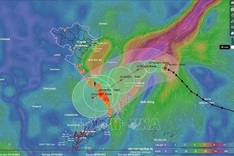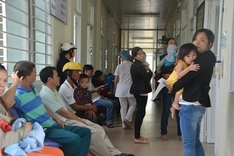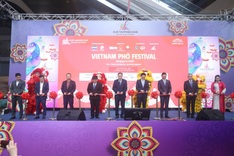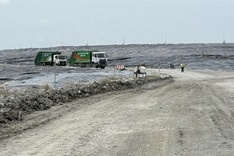Power projects in Ho Chi Minh City are still moving at a sluggish pace, continuing to cause a high risk of power shortages, particularly in the western part of the city.
 |
| Power demand of HCM City grows nearly 13%/year, particularly in the centre city |
The stagnant situation has been attributed to slow site clearance and complicated administrative procedures coupled with lax cooperation among concerned agencies.
Kicked off in April 2006, the section from Nha Be District in Ho Chi Minh City to Cai Lay District in Tien Giang Province under the 500kV Nha Be-O Mon transmission line has still faced difficulties with site clearance. Electricity Vietnam Group (EVN) has sent over 20 documents to the municipal authority and held 10 meetings to deal with the problems but the situation has not yet improved.
Construction of other major projects in the city invested into by EVN are also in the same boat, including the 500kV Phu Lam-O Mon transmission line (Phu Lam-Long An section), the 220kV Nhon Trach-Nha Be, 500kV Cau Bong and 220kV Binh Tan transformer stations.
EVN warned that the sluggish projects will continue bringing about an overload for the power grid, failing to ensure the power supply in the city, particularly in the west. The situation is predicted to get even worse in 2012 and 2013, as the south cannot produce sufficient power for its demand and have to get a considerable power amount delivered from the central region. This will put more pressure on the progress of power projects in the south.
Under the city’s electricity development plan from 2011 to 2015, the power consumption demand for Ho Chi Minh City is forecast to grow 12.9% per year. To ensure this, the power sector will have to build more transformer stations and transmission lines for the southern metro.
Overloaded power grid
In case of power breakdowns, the overload of some transformer stations and 500-220kV transmission lines will surpass the permitted levels. For instance, the 500-kV Phu Lam transformer station will work 145% higher than permitted levels and the rate of 195% and 163% for 220kV Thu Duc-Cat Lai and Nha Be-Nam Sai Gon stations respectively.
The majority of local transformer stations are being overcharged. Up to 23 out of 37 110-kV transformer stations have to work at full capacity and see overloads at peak hours.
According to EVN, the power supply sources are from power plants, and 500-220kV transformer stations basically meet the city’s power consumption demand.
The national power output sometimes may be insufficient for demand in 2010 due to prolonged drought and disasters.The city incurred less power cuts than others as it is a place of priority.
However, due to different increases in power demand, the city centre and the western parts of the city have greater power demand, which has overloaded some 110-kV power transmission and resulted in power outages.




















